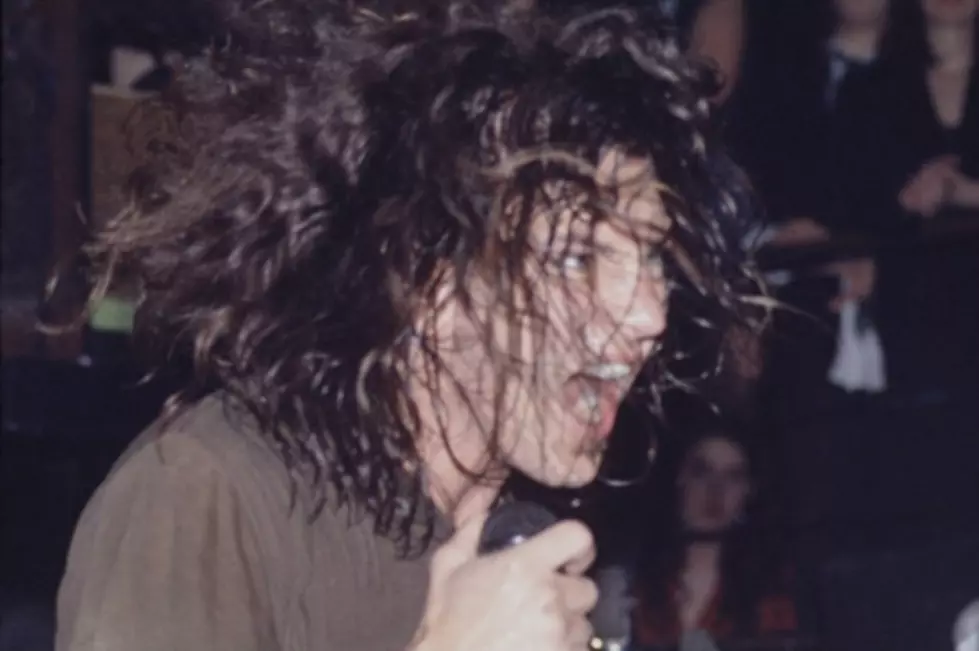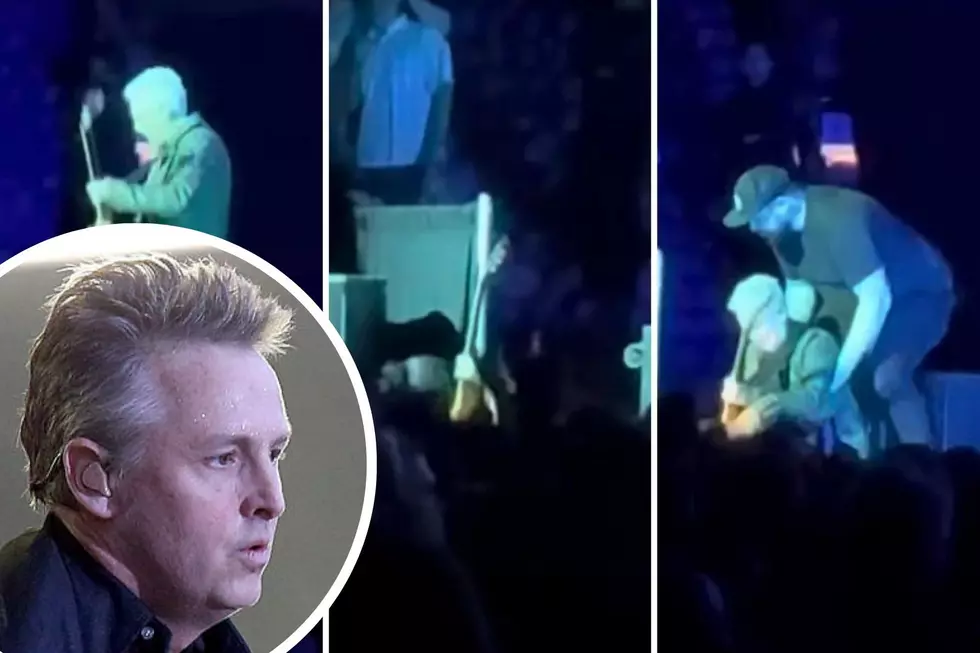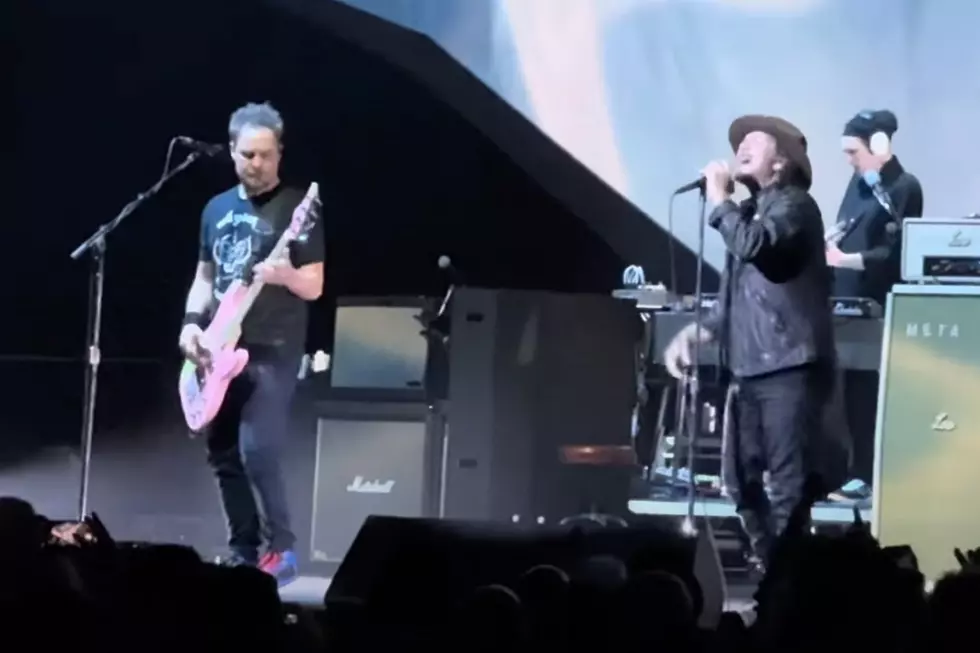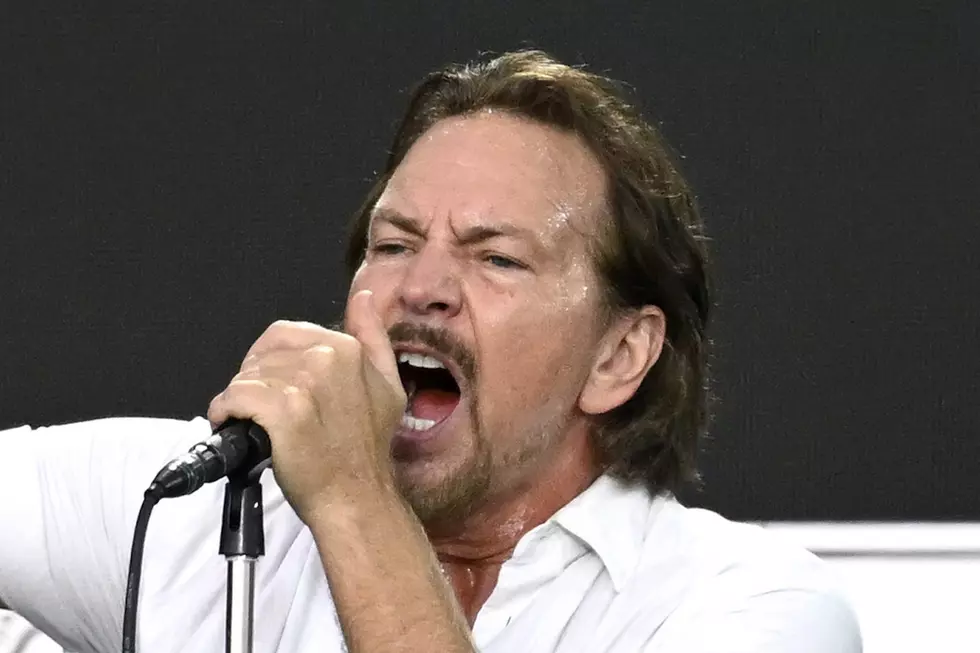
25 Years Ago: Pearl Jam Take the Stage for the First Time Ever
Years before success led them to become one of the biggest bands in the world, a group called Mookie Blaylock took the stage at a small club in Seattle on a cold October night. The Off Ramp Cafe (which is now gone) was situated in a weird, semi-desolate block in what was then a sleepier, dirtier city – a dank northwestern outpost of day laborers, lumberjacks and jet mechanics. But this show, on Oct. 22, 1990, was a direct precursor to the grunge explosion. Soon after, the band changed their name to Pearl Jam and began their jump to the forefront of mainstream culture.
First, the story that leads to this show starts with a band called Green River. As does the story of the music that would soon be called "grunge," that dense stew of DIY ethics, classic rock bombast and confessional lyricism that emerged from the Pacific Northwest to overtake American music in the early '90s.
Green River began in 1984 among four Seattle musicians whose musical sensibilities were outgrowing the stubby angst of punk and hardcore and edging into a style that melded big guitars a la Hendrix and Page with violent Iggy Pop-influenced vocals. During their four-year lifespan, the group -- which was comprised of vocalist Mark Arm, guitarist Steve Turner, guitarist Stone Gossard, bassist Jeff Ament and drummer Alex Vincent -- contributed to the 1986 Deep Six compilation (a blueprint for the grunge explosion); released two of the first records put out by fledgling Sub Pop; and might have been the first band ever described as grunge (by Sub Pop's Bruce Pavitt). In the end, they split in two before they could acheive whatever mainstream potential they had. Turner and Arm disdained the idea of joining a major label and formed the punkier, indie-spirited Mudhoney.
Gossard and Ament didn't mind chasing the big time, and that's exactly what they did with the next band. Mother Love Bone felt like a natural progression for Gossard and Ament, too. The band had an heir-apparent quality to it, after Green River's success and thanks in part to the addition of singer Andrew Wood. Wood worshiped proto-hair metal glam icons like Marc Bolan and Paul Stanley, and together, Wood, Gossard and Ament yielded a swaggering, riffy sound -- a bluesier, more open-sounding version of the chrome-and-leather rock Guns N' Roses and L.A. Guns were perfecting down in Hollywood. Bret Michaels would not have looked out of place in Mother Love Bone, but neither would Layne Staley.
Perhaps more important to the history of rock 'n' roll, however, is that fact that Gossard and Ament showed they could shape their sound around a distinctive singer. Gossard in particular shows a capacity in the Mother Love Bone recordings for attentive riff-writing and rhythm playing that could switch on a dime from spacious to tightly wound -- a style that first flowered in the most creative Green River output but that found its fullest expression on Pearl Jam's biggest early hits. The band never overshadowed Wood, whose flamboyance defined Mother Love Bone as much as Axl Rose's belligerence fueled Guns N' Roses.
In March 1990, the idea of a future that didn't center on Wood would have been inconceivable for Gossard and Ament: Mother Love Bone had a major label deal with Polygram, they'd spent months laboring on their debut album, and they were one of the most hyped bands in a scene that was clearly poised to blow up.
Then, just as the band's debut album Apple was scheduled to be released, Wood died of a drug overdose. His death shook the Seattle scene; Ament and Gossard were devastated and directionless. They turned down a request from their label to find a new singer. Ament took a break from music to focus on fine art, while Gossard buckled down on his guitar playing. He eventually found a kindred spirit in Mike McCready, a firey lead player who shared his passion for heavy '70s rock.
The two were giddy at the chemistry they'd found, and convinced Ament to come out of retirement to form a new band. The three jammed and fleshed out a few fledgling ideas, including a song called "Dollar Short" Gossard had left over from the Mother Love Bone days. They recorded a demo tape that contained a handful of fully fleshed out songs, albeit without vocals.
What they weren't quite ready to do, however, was draft a new singer and, given the way they're operated in the past, it was clear they worked best supporting someone with a strong vision and a distinctive approach -- rare qualities even in a scene burgeoning with talent. They didn't rush it. They set about looking for a drummer first, and while one of their top choices, former Red Hot Chili Pepper Jack Irons, declined the gig, he mentioned that a buddy he played hoops with in San Diego might be a good fit for singer. Irons said he'd pass on the demo.
Later, when Gossard and Ament received the tape back in the mail -- scrawled with a not, "For Stone + Jeff -- A Friend in California" -- they were stunned. It was their demo tape, but the San Diego kid, a part-time gas station attendant named Eddie Vedder, had dubbed his own vocals over the music. The parts he wrote -- which, legend has it, came to him while surfing -- drew from an entirely different pallet than singers like Chris Cornell and Layne Staley, whose styles were on the verge of becoming the mainstream rock flavor in the week.
Vedder's sound was deeper, bluesier, almost gutteral and nakedly emotional -- as were the lyrics he'd penned. Take "Dollar Short," for instance: on that track, he sang about a strange and complicated relationship between a bereaved wife who loses her husband and her adolescent son who curses his own survival. It's a story that is in part ripped from Vedder's own biography. He changed the name from "Dollar Short" to "Alive" -- a song about the burden of living.
The emotional demands of the new music changed Vedder as much as he'd changed it. San Diego friends recall Vedder as quiet and serious; one gave him the nickname "Holy Eddie." Rock journalists later described Vedder, a rock star now, in entirely different terms -- angry, emotional and deeply ironic. It was as if the music unlocked something inside him, inviting him to do battle with his darkest experiences. He sang them with everything he had.
Vedder spoke about working on these initial songs with Cameron Crowe a few years later. "There are certain songs that come from emotion," he said. "It's got nothing to do with melody or timing or even words; it has to do with the emotion behind the song. You can't put out 50 percent. You have to sing them from a feeling. Like 'Alive' and 'Jeremy' to this day -- and 'Black.' Those songs, they tear me up." It was a feeling that became disorienting later when Vedder stood on stage and saw millions of kids singing the words back him, interpreting his deeply personal words in ways he never intended.
That was still ahead. After hearing what Vedder did to their demo tape, Gossard, Ament and McCready flew him up to Seattle. (It's said that once Vedder landed, he went directly from the airport to the band's rehearsal space to continue writing.)
The new band – with Dave Krusen on drums – made major inroads into their sound. But in other ways, they were still finding is footing. That was the band took the stage that chilly Monday night in Seattle.
The Mookie Blalock show at the Off Ramp took place only seven months after Andrew Wood's death, and the sound of Mother Love Bone lingered. On grainy camcorder video of the show, most of the songs that launched Pearl Jam to superstardom -- "Alive," "Black" and "Even Flow" -- can be heard in nearly-completed form. But Gossard and McCready are a little more jammy and their guitar sound doesn't quite wield the heaviness of the lyrics. The wild, scaffold-climbing stage persona Vedder would adopt the next year was nowhere in sight -- instead, "Holy Eddie" stands mostly motionless, sometimes looking down at the floor, with his hands in his pockets, even on "Alive." (By the way, it's very weird to hear the band launch into the opening strains of "Alive" and not be greeted with delirious applause.)
It is, however, enthralling to hear the band still feeling out their chemistry and defining their sound. Even though they hadn't quite summoned the energy that would thrill MTV audiences just ten months later when Ten was released, they were also free of the baggage later hoisted on them by the music media, record companies, and their fans themselves -- the baggage of being saviors of rock, arbiters of culture, and, worst of all, the next big thing. The band would never have as little baggage -- and as much untapped potential -- as they had on that chilly night 25 years ago.
The 19 Most Influential Grunge Musicians
More From The Moose 94.7 FM










